
Journal of Animal Research: v.10 n.1, p. 47-52. February 2020
DOI: 10.30954/2277-940X.01.2020.6
Epidemiology of Gastrointestinal Helminths of Sheep in Aeolian Plains of Haryana
ABSTRACT
The epidemiological study of gastrointestinal parasites was carried out in unorganized sheep farms in aeolian plains of Haryana from March, 2018 to February, 2019. A total of 1080 faecal samples were examined, out of which 899 (83.24%) were positive for helminthic infections. The different helmiinths observed were strongyles (80.93%), Strongyloides spp. (28.24%), Trichuris spp. (7.31%) and Moniezia spp. (1.02%). Infection was non-significantly higher in adults (83.34%) as compared to young (76.67%). Males showed a non-significantly higher infection (89.79%) as compared to females (82.59%). Significantly higher (p˂0.05) infection was observed in monsoon (98.88%) as compared to winter (74.17%), spring (78.88%) and summer (82.72%) season. Significantly higher (p˂0.05) infection (100%) was observed during month of August and September while lowest infection was observed during month of November (56.67%). Coproculture studies revealed that Haemonchus contortus was predominant parasite during all the seasons, followed by Strongyloides spp., Trichostrongylus spp. and Oesophagostomum spp. No trematode eggs were identified during study period.
Keywords: Age, gastrointestinal helminths, epidemiology, season, sex, sheep
Small ruminants play important role in rural economy by supporting marginal and landless farmers substantially. Even their existence in rural households, exert a cushioning effect in the event of crop failures due to various reasons including climatic vagaries. Especially in arid or semi¬arid dry lands, small ruminants are immensely helpful for livelihood security of these sections. Among various constraints in small ruminants husbandry contributing to production losses, gastrointestinal (GI) parasites constitute a major share. Due to the grazing habit of these animals and nomadic nature of husbandry, these animals are much prone to parasitic infections. The GI tract of animals harbour a wide variety of parasites, like helminths, coccidia etc. which cause clinical and sub clinical parasitism. The GI nematodes are considered as major constraints affecting the production performance of sheep and goats throughout the world including India (Kumar et al, 2008). Due to this reason the epidemiology of gastrointestinal nematodosis in sheep was studied in almost all agro-climatic regions (Dhanalakshmi et al.,2001; Mamatha and D’Souza, 2007). Gastrointestinal parasites not only affect the health but also affect the productive and reproductive performance of the animals which includes loss in body weight, poor reproductive performance, digestive disturbance, emaciation for longer period and increased susceptibility of animals to other infections.
Prevalence of gastrointestinal parasite infection in livestock varies according to the existing climatic condition and managemental practices (Kumar et al.,2016). The environmental factors like temperature, rainfall and humidity play an important role in the development and survival of pre-parasitic stages (Kumar et al, 2008). Therefore, it is needed to estimate the possible variation in parasitic infection in different geographic regions, which could help to design effective control measures against the parasitic diseases.
How to cite this article: Priyanka, Vohra, S., Singh, S. and Sangwan, A.K. (2020). Epidemiology of gastrointestinal helminths of sheep in aeolian plains of Haryana. J. Anim. Res., 10(1): 47-52.
In Haryana, limited studies have been undertaken to provide information on the epidemiology of GI infections in small ruminants of Haryana (Gupta et al., 1987). Epidemiological knowledge is essential for the control and prevention of parasitic infections. Therefore, the present study was planned to know the incidence and severity of GI parasites in sheep of aeolian plains in Haryana.
MATERIALS AND METHODS
Study area
The epidemiology of GI parasites was studied in sheep of six villages belonging to three districts i.e. Satnali and Dalanwas village of Mahendergarh district, Loharu and Kairu village of Bhiwani district and Badhra and Kadma village of Charkhi Dadri district in aeolian plains of Haryana.
Sample collection and processing
Fifteen faecal samples per month, from the same flock of each village, were collected throughout the year from March, 2018 to February, 2019. Per rectum fresh faecal samples (a minimum of 5 g) were collected from each animal. Samples were placed in individually sealed containers bearing identification number of the animal. The samples were then brought to laboratory. Floatation technique was used for demonstrating nematode and cestode eggs, while sedimentation technique was used for detecting the trematode eggs. The ova/eggs of parasites were identified from their morphological characters (Soulsby, 1982). Egg per gram (EPG) of infection was determined by the modified McMaster technique to an accuracy of one egg counted representing 50 EPG. Pooled faecal samples were subjected to coproculture using petridish method. Faecal samples mixed with charcoal were kept at 27±2°C for 7 days to recover infective larvae (L3). The infective larvae were identified as per criteria of Keith, (1953).
Seasons were categorized as spring (February-March), summer (April to June), monsoon (July to September) and winter (October to January). Animal’s factors like age i.e. young (˃ 6 months) or adult (>6 months) and sex (male or female) were also incorporated in study. The data was statistically analysed using chi square and z-test.
RESULTS AND DISCUSSION
The total number of sheep examined, number positive, per cent prevalence is depicted in table 1. The results revealed an overall prevalence of 83.24% with prevalence of Strongyle spp. (80.93%), Strongyloides spp. (28.24%), Trichuris spp. (7.31%) and Moniezia spp. (1.02%).
Table 1: Prevalence of various gastrointestinal (G.I) parasites in aeolian plains of Haryana

The prevalence of gastrointestinal parasites in sheep has been reported by many workers earlier. It has been reported by Muraleedharan, 2005; Kaur and Kaur, 2008; Pant et al.,2009; Sutar and Khan, 2011; Choubisa and Jaroli, 2013; Singh et al., 2013 and Vohra et al., 2018).
In the present study, among helminths, the prevalence of strongyles was maximum followed by Strongyloides spp., Trichuris spp. and Moniezia spp. Almost similar observations for helminths have been recorded earlier by (Varadharajan and Vijayalakshmi, 2015; Vohra et al.,2018; Sultan et al, 2016). Lower prevalence of cestode in the study might be due to less dissemination of eggs in the faeces from the gravid segments as reported by Radostits et al, (1994). There were no trematodes observed in the present study. Absence of trematodes might be due to dry area of aeolian plains, absence of natural water bodies as well as snails which act as intermediate host of the trematodes. Therefore, no snail borne disease was observed in the study area.
The number of sheep positive for different GI parasites and their prevalence in relation to age and sex is depicted in table 2. The results in term of age revealed an overall prevalence of 76.67% and 83.84% infection in young and adult animals, respectively. Sex wise, the prevalence was 89.79% and 82.59% in male and female, respectively. The results in relation to age showed a significantly higher infection of strongyle (p<0.01) in adults as compared to young animals. The coprological results in relation to sex revealed a non significantly higher value in male as compared to female for strongyle, Strongyloides, Trichuris and Moniezia infection. Significantly higher infection in adults as compared to young small ruminants was reported by Dabasa et al. (2017) in Bale zone, South Eastern Ethiopia as well as by Rahman et al. (2017) in Tangail, Bangladesh. Almost similar percentage of infection in both male and female might be due to similar management practices and same area visited by these animals during grazing.
Table 2: Prevalence of various gastrointestinal parasites in relation to age and sex
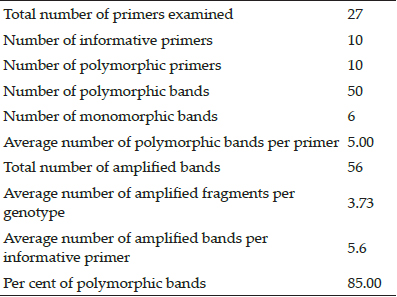
** Significant at 1% level, * Significant at 5% level, NS: Non significant
Table 3: Seasonal prevalence of various gastrointestinal parasites in sheep
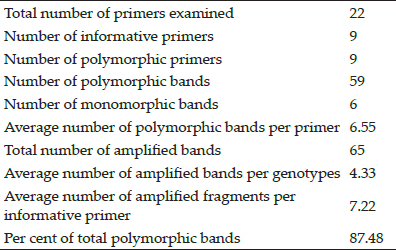
** Significant at 1% level, * Significant at 5% level
During the present study, higher infection of strongyle and Strongyloides was observed in adult as compared to young animals. It may be due to consumption of higher amount of vegetation and grazing on larger area of pastures being contaminated with various flocks and different stress conditions such as climate, long daily traveling and gestation. On the other hand, young animals are less affected by parasitic infections due to consumption of less amount of vegetation and less exposure for grazing as they mainly depend upon milk feeding. Our findings were in concordance with Singh et al. (2017); Yadav et al. (2006); and Emiru et al, (2013) who recorded a higher prevalence of infection in adults than young ones.
The prevalence of various GI parasites in sheep during different seasons is depicted in table 3. The overall prevalence shows 78.88%, 82.72%, 98.88% and 74.17% infection during spring, summer, monsoon and winter, respectively. The examination of infection in sheep showed maximum infection of strongyle and Strongyloides during monsoon season. Similar were the findings of Gupta et al. (2013) and Sutar and Khan (2011). Environmental conditions are usually favourable for the development, survival and translocation of pre-parasitic stages during the rainy season. Therefore, there is a gradual build-up of adult worm populations in grazing animals, consequently, higher prevalence of helminths was recorded during the rainy season.
Table 4: Monthly prevalence of various gastrointestinal parasites in sheep
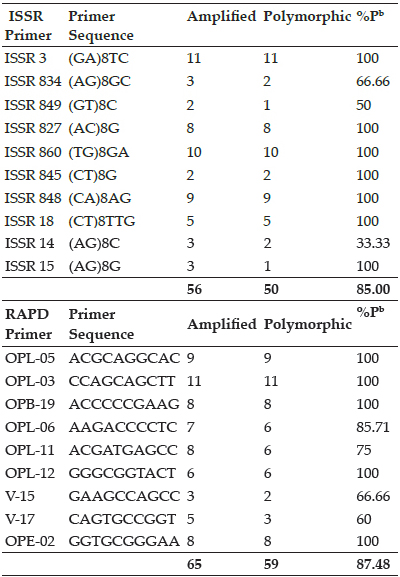
** Significant at 1% level, * Significant at 5% level.
Table 5: Larval composition (%) in coproculture studies in aeolian plains of Haryana
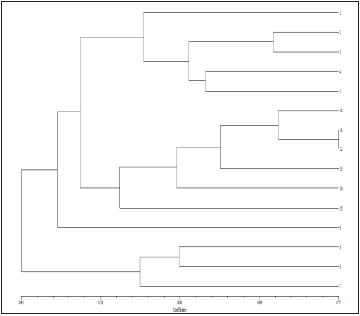
The prevalence of various GI parasites infection in sheep in different months from March, 2018 to February, 2019 is depicted in table 4. The results revealed that maximum (100%) animals were having parasitic infection during August and September months. Minimum infections (56.67%) were observed during November month. Al- Shaibani et al. (2008) also reported maximum number of sheep positive for GI nematodes during the month of July to October at Hyderabad district of Pakistan.
The results of coproculture studies of GI nematodes in sheep are presented in table 5. The faecal culture showed that the larvae of Haemonchus contortus, Trichostrongylus spp., Oesophagostomum spp. and Strongyloides sp. were present. The larvae of H. contortus were the main contributor throughout the study period among all the four species identified in coproculture. Gupta et al. (1987) also demonstrated infective larvae of Haemonchus spp. and Trichostrongylus spp. throughout the year in goats and sheep of eastern Haryana. Other workers who reported the predominance of Haemonchus were Al-Shaibani et al. (2008); Varadharajan and Vijayalakshmi (2015); Rajaranjan et al. (2017) and Vohra et al. (2018).
The month wise mean epg of strongyles in sheep belonging to aeolian plains of Haryana is depicted in figure 1. The results revealed that the mean epg of animals was maximum (2087.78) during the month of September and minimum (232.22) during the month of February. Al-Shaibani et al., (2008) also reported maximum mean faecal egg count in sheep during August and minimum during February in Pakistan.
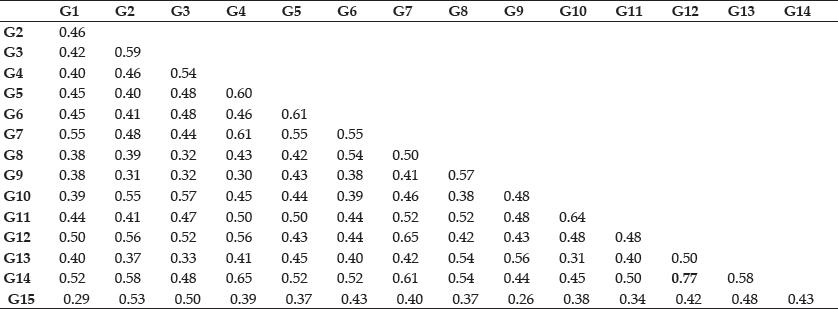
Fig. 1: Month wise strongyle EPG (Mean) in sheep of aeolian plains in Haryana
CONCLUSION
The prevalence of GI parasites in sheep of aeolian plains in Haryana was 83.24%. The highest prevalence of strongyle, followed by Strongyloides, Trichuris and Moniezia was observed. Maximum prevalence was recorded in monsoon season during August and September months and highest epg of strongyles was observed during September. The coproculture study revealed the predominance of Haemoncus contortus throughout the study period.
REFERENCES
Al-Shaibani, I.R.M., Phulan, M.S., Arijo, A. and Qureshi, T.A. 2008. Epidemiology of ovine gastrointestinal nematodes in Hyderabad district, Pakistan. Pakistan Vet. J., 28 (3): 125¬130.
Choubisa, S.L. and Jaroli, V.J. 2013. Gastrointestinal parasitic infection in diverse species of domestic ruminants inhabiting tribal rural areas of southern Rajasthan, India. J. Parasit. Dis, 37 (2): 271-275.
Dabasa, G., Shanko, T., Zewdei, W., Jilo, K., Gurmesa, G and Abdela, N. 2017. Prevalence of small ruminant gastrointestinal parasites infections and associated risk factors in selected districts of Bale zone, south eastern Ethiopia. J. Parasitol. Vector Biol., 9 (6): 81-88.
Dhanalakshmi, H., Jagannath, M.S. and D’Souza, P.E. 2001. Gastrointestinal parasitic infections in sheep at different farms of Karnataka. J. Vet. Parasitol., 15 : 133-135.
Emiru, B., Amede, Y., Tigre, W., Feyera, T. and Deressa, B. 2013. Epidemiology of gastrointestinal parasites of small ruminants in Gechi district, Southwest Ethiopia. Adv. Biol. Res, 7 (5): 169-174.
Gupta, A., Dixit, A.K., Dixit, P. and Mahajan, C. 2013. Prevalence of gastrointestinal parasites in small ruminants in and around Jabalpur, India. J. Vet. Parasitol., 27 (1): 59-60.
Gupta, R.P., Yadav, C.L. and Chaudhri, S.S. 1987. Epidemiology of gastrointestinal nematodes of sheep and goats in Haryana, India. J. Vet. Parasitol., 24 (1-2): 117-127.
Kaur, H. and Kaur, D. 2008. Prevalence of gastrointestinal parasites in domestic animals of Patiala and its adjoining areas. J. Vet. Parasitol., 22 (2): 25-28.
Keith, R.K. 1953. The differentiation of the infective larvae of some common nematode of cattle. Aus. J. Zool., 1 : 233-235.
Kumar, B., Maharana, B.R., Prasad, A., Joseph, P.J., Patel, B. and Patel, J.S. 2016. Seasonal incidence of parasitic diseases in bovines of south western Gujarat, India. J. Parasit. Dis., 40(4): 1342-1346.
Kumar, R.R., Yadav, C.L., Garg, R., Banerjee, P.S. and Vatsya, S. 2008. Prevalence of gastro-intestinal nematodes in sheep and goat in some parts of north-west India. Indian J. Anim. Sci., 78(11): 1244-1246.
Mamatha, G.S. and D’Souza, P.E. 2007. Gastrointestinal parasites in sheep and goats from different districts of Karnataka. Intas Polivet., 8: 112-114.
Muraleedharan, K. 2005. Prevalence of gastrointestinal parasites of livestock in a central dry zone of Karnataka. J. Vet. Parasitol., 19 (1): 31-33.
Pant K., Rajput M.K.S., Kumar J., Sahu S., Vandna, Rajkumari and Gangwar P. 2009. Prevalence of helminthes in small ruminants in Tarai region of Uttarakhand. Vet. World, 2(7): 265-266.
Radostitis, O.M, Blood, D.C. and Gay, C.C. 1994. Diseases caused by helminthes parasites. In: Veterinary Medicine: A Text Book of Diseases of Cattle, Sheep, Pigs, Goats and Horses, 8th Ed., p. 1223-30. Balliere Tindall, London.
Rahman, M.d. A., Labony, S.S., Dey, A.A. and Alam, M.Z. 2017. An epidemiological investigation of gastrointestinal parasites of small ruminants in Tangail, Bangladesh. J. Bangladesh Agril. Univ., 15 (2): 255-259.
Rajarajan, S., Palanivel, K.M., Geetha, M. and Rani, N. 2017. Epidemiology of gastrointestinal parasitism in small ruminants in Pudukkottai district, India. Int. J. Curr. Microbiol. App. Sci., 6 (10): 4924-4930.
Singh, E., Kaur, P, Singla, L.D. and Bal, M.S. 2017. Prevalence of gastrointestinal parasitism in small ruminants in western zone of Punjab, India. Vet. World, 10 (1): 61-66.
Singh, V., Varshney, P., Dash, S.K. and Lal, H.P. 2013. Prevalence of gastrointestinal parasites in sheep and goats in and around Mathura, India. Vet. World, 6(5): 260-262.
Soulsby, E.J.L. 1982. Helminths, arthropods and protozoa of domesticated animals. 7th Ed., ELBS, Bailliere Tindall, London, pp. 809.
Sultan, K., Elmonir, W. and Hegazy Y. 2016. Gastrointestinal parasites of sheep in Kafrelsheikh governorate, Egypt: Prevalence, control and public health implications. J. Basic App. Sci., 5 : 79-84.
Sutar, A.U. and Khan, M.R. 2011. Seasonal prevalence of gastrointestinal parasites in sheep of rural areas of Ahmednagar district of Maharashtra. Asian. J. Anim. Sci.,6(1): 21-22.
Varadharajan, A. and Vijayalakshmi, R. 2015. Prevalence and seasonal occurrence of gastrointestinal parasites in small ruminants of coastal areas of Tamil Nadu. Int. J. Sci. Res.,5(2): 1-4.
Vohra, S., Singh, S., Kumar, P. and Patil, C.S. 2018. Incidence and severity of gastrointestinal parasites in small ruminants at Hisar, Haryana. J. Anim. Res., 8(6): 1021-1025.
Yadav, A., Khajuria, J.K. and Raina, A.K. 2006. Seasonal prevalence of gastrointestinal parasites in sheep and goats of Jammu. J. Vet. Parasitol., 20(1): 65-68.